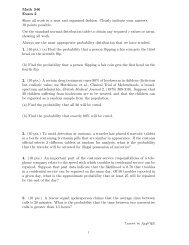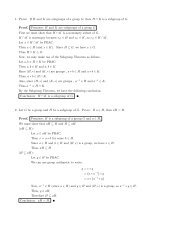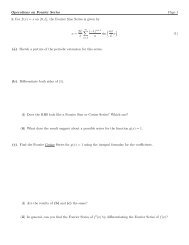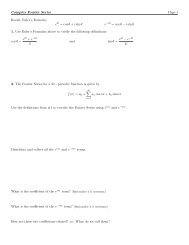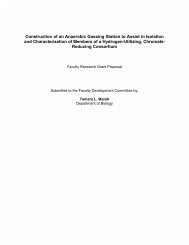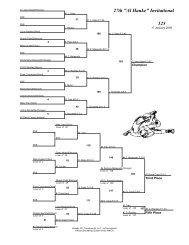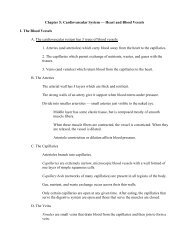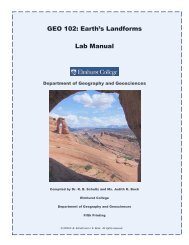Free Executive Summary - Elmhurst College
Free Executive Summary - Elmhurst College
Free Executive Summary - Elmhurst College
You also want an ePaper? Increase the reach of your titles
YUMPU automatically turns print PDFs into web optimized ePapers that Google loves.
Learning to Think Spatially: GIS as a Support System in the K-12 Curriculum<br />
http://www.nap.edu/catalog/11019.html<br />
SPATIAL THINKING IN EVERYDAY LIFE, AT WORK, AND IN SCIENCE 67<br />
FIGURE 3.11 Cepheids in the Andromeda galaxy. Using the 100-inch Hooker telescope at Mt. Wilson,<br />
Hubble managed to measure the light curves of variable stars in the Andromeda galaxy, which he identified as<br />
Cepheids, and used to infer the distance to the galaxy. SOURCE: Hubble, 1936.<br />
3.5.6 Thinking Spatially in Astronomy: The Role of Astrophysical Spatialization<br />
Astronomy has at its core a long and powerful practice of spatial thinking. Two factors enabled<br />
its advancement: (1) a careful and systematic observation of the heavens and (2) a series of<br />
intellectual breakthroughs achieved by some of the finest spatial thinkers in the history of science.<br />
Breakthroughs enabled astronomy to build a picture of the universe in space and time, starting from<br />
the seemingly simple observation of the apparent position and brightness of celestial objects in the<br />
night sky. The boundary of our knowledge of the four-dimensional structure of the universe spread<br />
out from Earth like a ripple from a rock thrown in the pond. Eratosthenes’ work provided a baseline,<br />
the shape and size of Earth. Kepler used the observations of Brahe to build a rational view of the<br />
spatial structure of the solar system and the motion of planets and other objects within it. With time,<br />
Copyright © National Academy of Sciences. All rights reserved.



